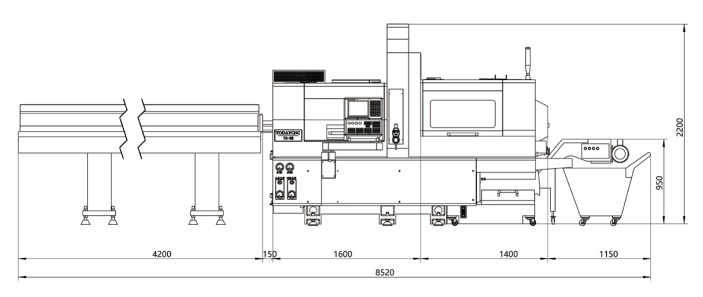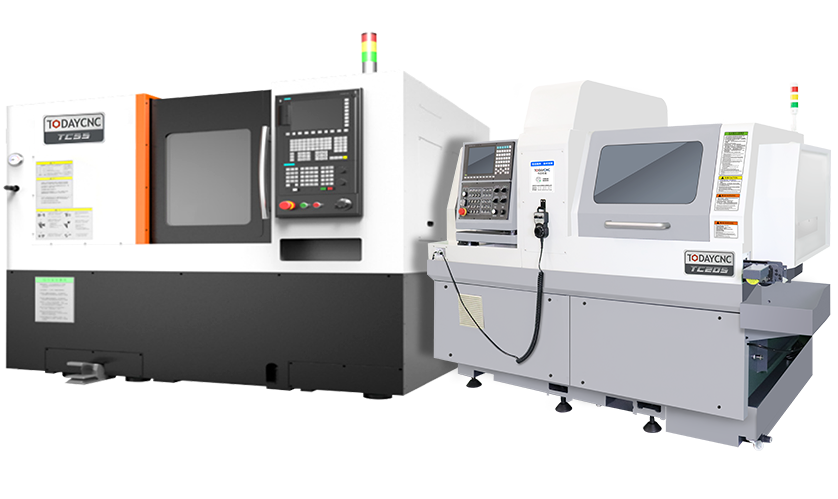Unlock Precision: The Benefits of Wholesale Dual Spindle CNC Lathes
Unlock Precision: The Benefits of Wholesale Dual Spindle CNC Lathes
Table of Contents
1. Introduction to Dual Spindle CNC Lathes
2. Understanding the Technology Behind Dual Spindle CNC Lathes
3. Benefits of Using Dual Spindle CNC Lathes
3.1 Enhanced Productivity
3.2 Increased Precision and Accuracy
3.3 Cost Efficiency and Scalability
3.4 Versatility in Operations
4. Key Features to Look For
5. Applications of Dual Spindle CNC Lathes in Manufacturing
6. Choosing the Right Wholesale Supplier
7. Maintenance and Care for Optimal Performance
8. Frequently Asked Questions (FAQs)
9. Conclusion
1. Introduction to Dual Spindle CNC Lathes
The manufacturing sector is rapidly evolving, with advanced technologies redefining production processes. Among these innovations, **dual spindle CNC lathes** stand out as a game-changer. These sophisticated machines offer a remarkable blend of efficiency, precision, and versatility, making them an invaluable asset for any machining operation. In this article, we will delve into the multitude of benefits associated with wholesale dual spindle CNC lathes and why investing in them can significantly enhance your manufacturing capabilities.
2. Understanding the Technology Behind Dual Spindle CNC Lathes
At its core, a dual spindle CNC lathe features two spindles that operate independently yet simultaneously. This design allows for a streamlined production process, as one spindle can perform one operation while the other handles a different task. The integration of Computer Numerical Control (CNC) technology means that these machines can execute complex machining tasks with unparalleled precision. Understanding how this technology works is crucial for manufacturers looking to adopt or upgrade their machinery.
3. Benefits of Using Dual Spindle CNC Lathes
Investing in **dual spindle CNC lathes** comes with an array of advantages that can significantly impact a manufacturing operation’s productivity and profitability.
3.1 Enhanced Productivity
One of the most compelling benefits of dual spindle CNC lathes is the **enhanced productivity** they offer. With the ability to perform multiple operations concurrently, these machines reduce cycle times and allow for more parts to be produced in a shorter time frame. This increase in productivity not only helps meet customer demands more efficiently but also enables manufacturers to take on more projects simultaneously.
3.2 Increased Precision and Accuracy
Precision is paramount in manufacturing. Dual spindle CNC lathes are designed to provide exceptional accuracy, minimizing human error and ensuring that each component meets stringent specifications. The ability to program complex geometries and maintain tight tolerances makes these machines ideal for high-quality manufacturing processes, particularly in industries where precision is critical, such as aerospace and medical device manufacturing.
3.3 Cost Efficiency and Scalability
While the initial investment in dual spindle CNC lathes may be significant, the long-term **cost efficiency** of these machines is undeniable. By reducing cycle times and increasing throughput, manufacturers can achieve a quicker return on investment (ROI). Moreover, as production demands increase, dual spindle CNC lathes can easily scale to accommodate higher output without necessitating the purchase of additional equipment.
3.4 Versatility in Operations
Another advantage of dual spindle CNC lathes is their **versatility**. These machines can handle a wide variety of materials and machining tasks, from turning and milling to drilling and threading. This adaptability means that manufacturers can utilize a single machine for multiple applications, streamlining operations and reducing the need for a large inventory of specialized machinery.
4. Key Features to Look For
When considering the purchase of a wholesale dual spindle CNC lathe, several key features should be taken into account:
- **Spindle Speed and Power**: Higher spindle speeds allow for faster machining processes, while adequate power ensures that the machine can handle tough materials.
- **Tool Magazine Capacity**: A larger tool magazine allows for more tools to be loaded, reducing downtime during production.
- **Control Software**: Modern CNC lathes come equipped with advanced control software that enhances programming capabilities and user interface.
- **Durability and Build Quality**: Investing in a machine made with high-quality materials will ensure longevity and reliability.
5. Applications of Dual Spindle CNC Lathes in Manufacturing
Dual spindle CNC lathes find applications across various sectors due to their adaptability. Common applications include:
- **Aerospace Components**: Precision-engineered parts that meet strict tolerance and weight specifications.
- **Automotive Manufacturing**: Production of complex engine components and transmission parts.
- **Medical Devices**: Manufacturing of intricate surgical instruments and implants where accuracy is critical.
- **General Industry**: Production of threaded fasteners, fittings, and other precision components.
6. Choosing the Right Wholesale Supplier
Selecting the right supplier for wholesale dual spindle CNC lathes is crucial for ensuring quality and support. Factors to consider include:
- **Reputation**: Research the supplier’s history and customer reviews to gauge reliability.
- **Service and Support**: Ensure they offer robust after-sales support, training, and maintenance services.
- **Quality Assurance**: Verify that the machines meet industry standards and regulations.
7. Maintenance and Care for Optimal Performance
To maintain the longevity and efficiency of dual spindle CNC lathes, regular maintenance is vital. Key maintenance practices include:
- **Routine Inspection**: Regularly check for wear and tear on components.
- **Lubrication**: Keep moving parts well-lubricated to prevent friction and damage.
- **Software Updates**: Ensure that the CNC software is regularly updated to improve functionality and security.
8. Frequently Asked Questions (FAQs)
**Q1: What is the main difference between single spindle and dual spindle CNC lathes?**
A1: The primary difference lies in the number of spindles. Dual spindle lathes can perform multiple operations simultaneously, while single spindle lathes can only handle one operation at a time.
**Q2: Are dual spindle CNC lathes suitable for small businesses?**
A2: Yes, they are highly adaptable and can benefit small businesses by improving efficiency and reducing lead times, making it easier to compete in the market.
**Q3: How do I determine the right size of a CNC lathe for my operation?**
A3: Consider the types of parts you will be machining, the materials used, and the available space in your facility. Consulting with a supplier can also provide guidance.
**Q4: What types of materials can dual spindle CNC lathes work with?**
A4: These machines can work with a wide range of materials, including metals like steel and aluminum, plastics, and composites.
**Q5: How often should I perform maintenance on my CNC lathe?**
A5: Maintenance frequency can vary based on usage, but it is generally recommended to conduct inspections and maintenance checks at least once a month.
9. Conclusion
Wholesale dual spindle CNC lathes represent a significant advancement in manufacturing technology, offering numerous benefits that can transform production processes. By enhancing productivity, increasing precision, and providing cost efficiencies, these machines are essential for businesses looking to thrive in a competitive market. As manufacturers continue to seek out innovative solutions, dual spindle CNC lathes will undoubtedly play a pivotal role in shaping the future of manufacturing. Investing in this technology now can position your business for sustained success and growth in the years to come.
Related Blog













